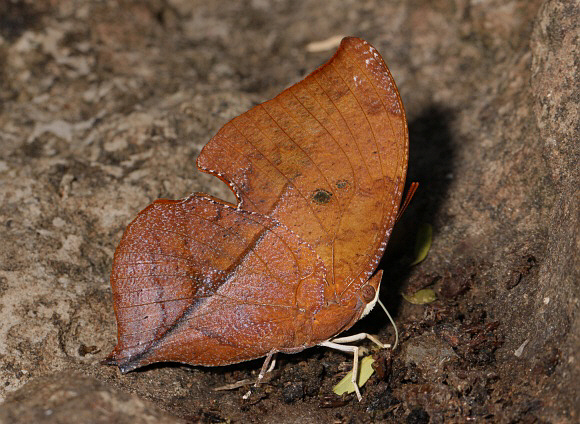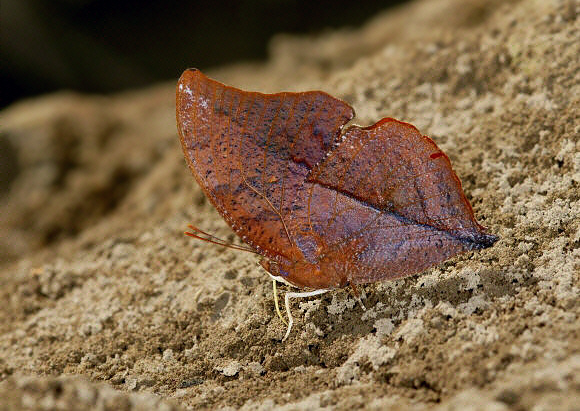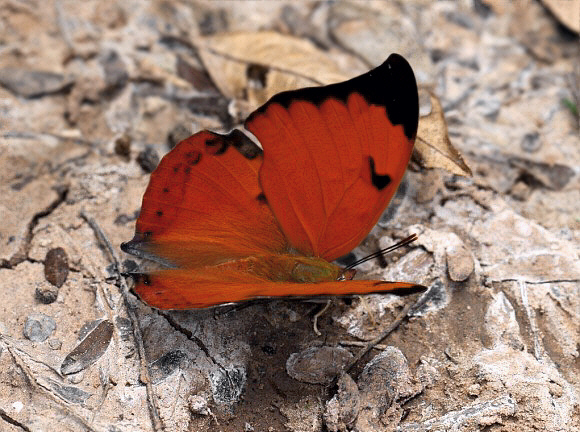 Zaretis isodora, Satipo, Peru – Adrian Hoskins
Zaretis isodora, Satipo, Peru – Adrian Hoskins
Introduction
There are 88 species in the tribe Anaeini, all of which are confined to the neotropical region. All have cryptic “dead-leaf” patterns on the underside and a leaf-like profile, with a falcate apex on the forewing and a short tail on the hindwing.
The Charaxine genera Coenophlebia and Zaretis are among the most convincing dead leaf mimics in the insect world, coloured like dead dry leaves, complete with a fake “midrib” and “leaf-mould” mottling. Some species such as Coenophlebia archidona, and the dry season forms of Zaretis itys take things even further, having translucent blotches that bear a remarkable resemblance to the nibbled tissue of leaves that have been attacked by leaf beetles or young caterpillars !
The genus Zaretis comprises of 6 species, variously distributed from Mexico to Bolivia – namely itys, ellops, callidryas, isidora, syene and a so far unnamed species discovered by Willmott & Hall.
Zaretis isodora is almost as variable in colour and pattern as the leaves which it simulates. The ground colour varies from earthy brown to pale umber or dull orange. The dark mottling can be very heavy in some examples or almost absent in others. The hyaline ( translucent ) areas are variable in size. In some examples they can be absent.
The butterfly is widespread, being found from Rio Grande in Mexico to Argentina and Bolivia.
 Zaretis isodora, male, Rio Madre de Dios, Peru – Adrian Hoskins
Zaretis isodora, male, Rio Madre de Dios, Peru – Adrian Hoskins
Habitats
This species is found in rainforest and humid deciduous forest at altitudes between about 0-600m.
 Zaretis isodora, Ecuador – Tony Hoare
Zaretis isodora, Ecuador – Tony Hoare
Lifecycle
I have no data specific to isodora but the lifecycle will be similar to that of other Zaretis species. A fully grown Zaretis larva is typically dark brown, with a series of dark markings along the back. It has a prominent raised flap-like hump behind the thorax, and the head bears a pair of stout horns. Foodplants utilised by Zaretis species include Casearia, Ryanea and Laetia ( Flacourtiaceae ).
Adult behaviour
Both sexes feed at rotting fruits in the canopy, but males can sometimes be encountered at midday, imbibing moisture from damp sunlit sandbanks or along wide forest trails. If disturbed, or if clouds temporarily obscure the sun, they fly up into trees and settle under leaves or small branches.

Zaretis isodora, Satipo, Peru – Adrian Hoskins
